Audi has released some interesting details about the upcoming new Audi RS 3.
Firstly, this is Audi’s first vehicle to feature the RS Torque Splitter, which distributes drive torque between the rear wheels in a fully variable manner.
Axle VS torque splitter
Unlike the rear axle differential and the previous multiple disc clutch package on the rear axle, the torque splitter uses one electronically controlled multiple disc clutch each on the respective drive shaft.
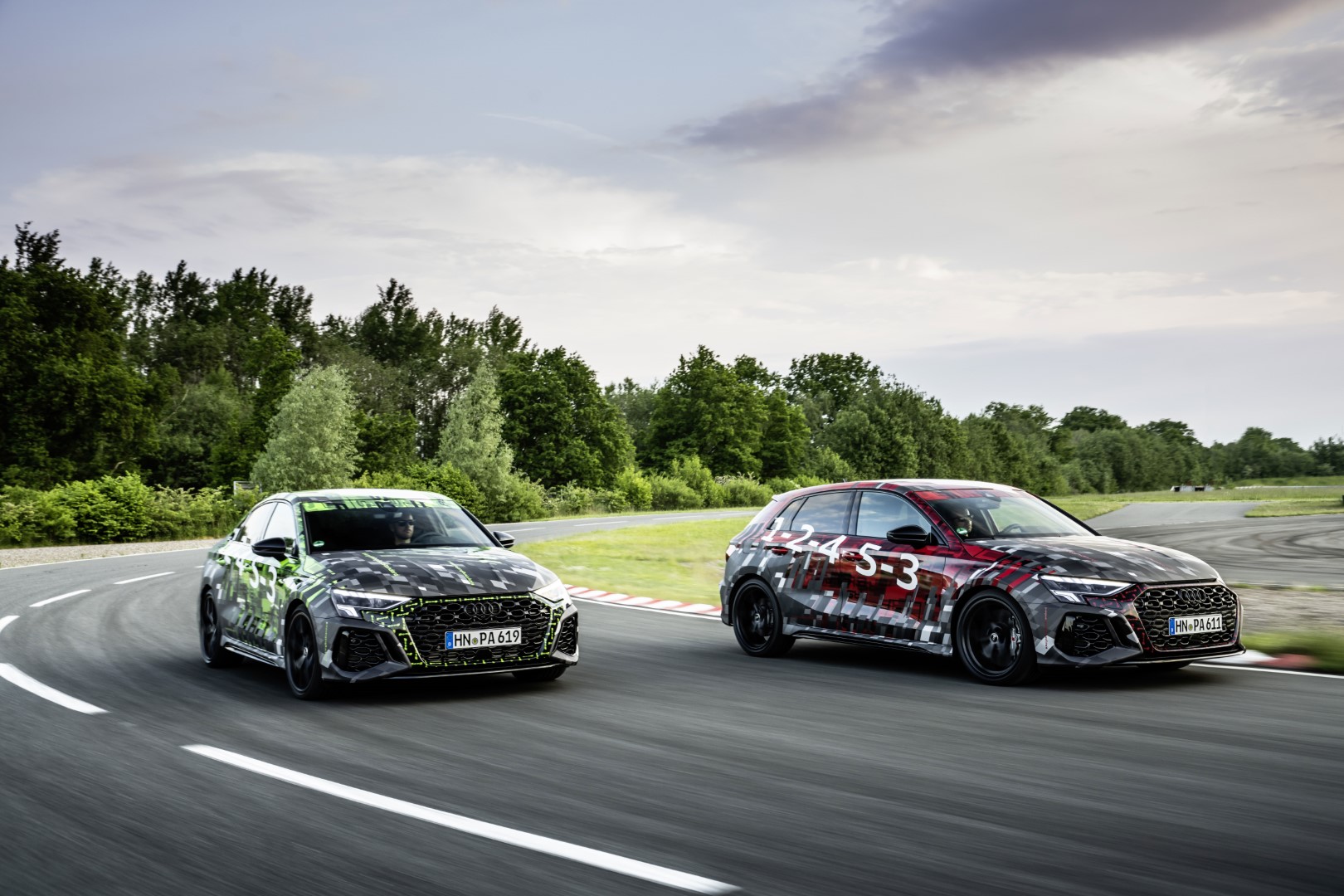
During dynamic driving, the torque splitter increases the drive torque to the outer rear wheel with the higher wheel load, which significantly reduces the tendency to understeer.
When driving on closed roads, the torque splitter enables controlled drifts by applying all of the engine power to just one of the rear wheels.
More precise steering
Due to the difference in propulsive forces, the car turns into the curve even better and follows the steering angle more precisely.
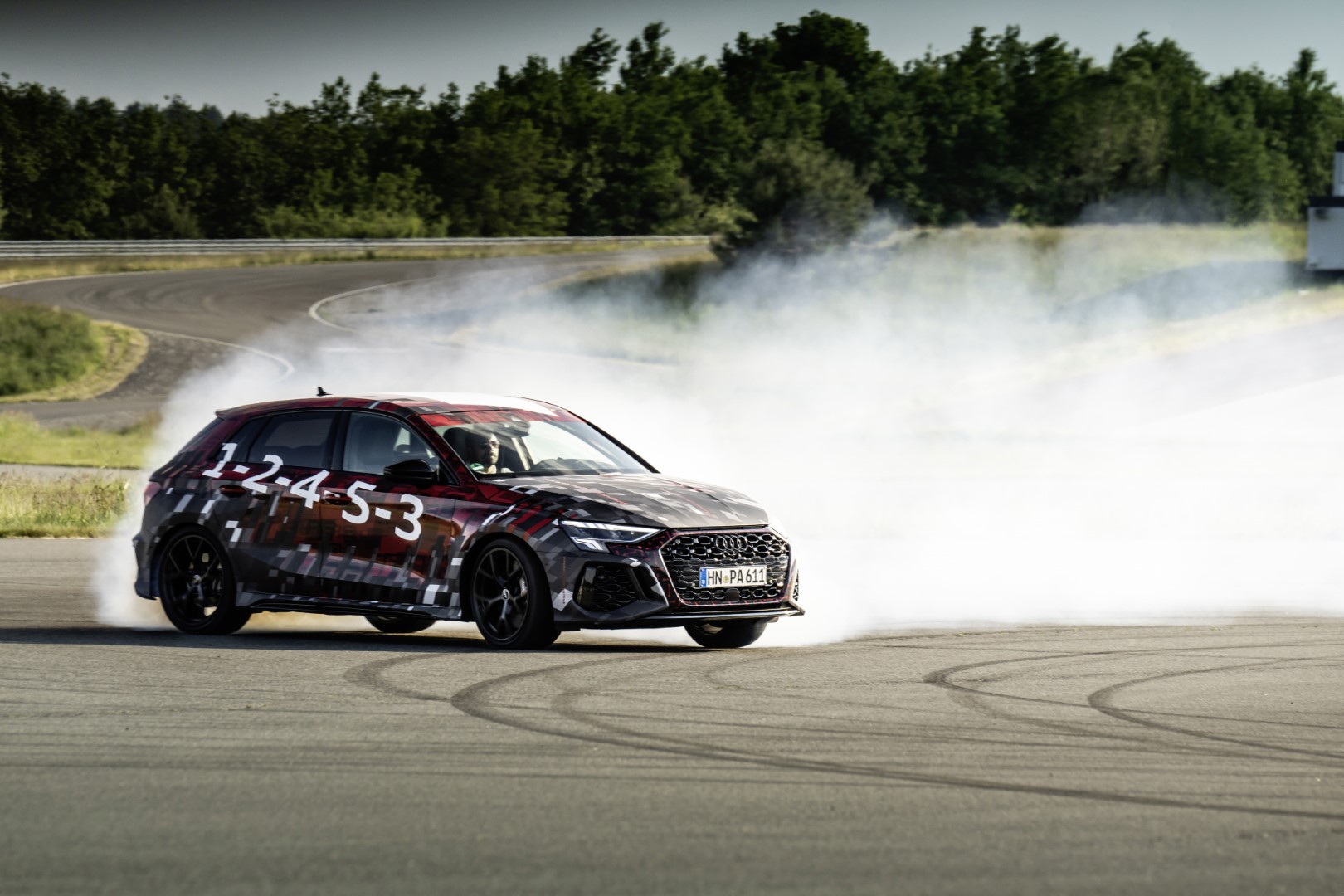
That being said, the exact distribution of drive torque always depends on the mode selected in Audi drive select and the respective driving situation.
400 PS / 500 Nm
The 400 PS 2.5 TFSI five-cylinder engine now unleashes 500 Nm of torque, which is 20 Nm more than in the previous model.
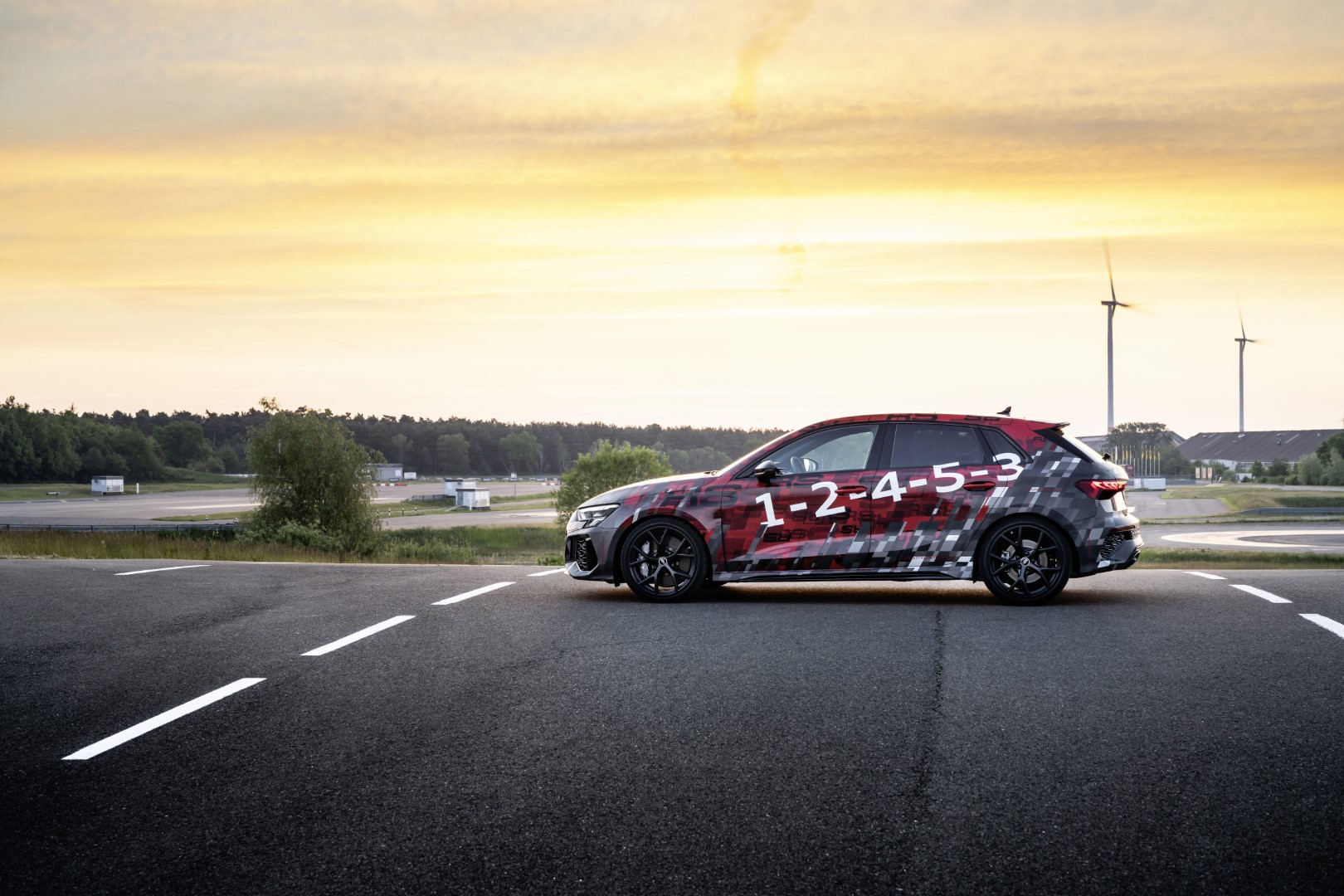
Thanks to the powertrain, the Audi RS 3 sprints from zero to 100 km/h in 3.8 seconds and reaches a top speed of 290 km/h.
The five-cylinder in the Audi RS 3 is more powerful and delivers higher torque. Instead of 480 Nm, a maximum of 500 newton meters is now available – across a wide rev range from 2,250 to 5,600 rpm.
“Faster” ECU
The new engine control unit also increases the speed and intensity at which all of the drive components communicate with each other. As a result, the RS 3 responds even faster, especially in the low rev ranges.
The maximum power of 400 PS is now available in the range from 5,600 to 7,000 rpm and thus earlier and longer than in the previous model.
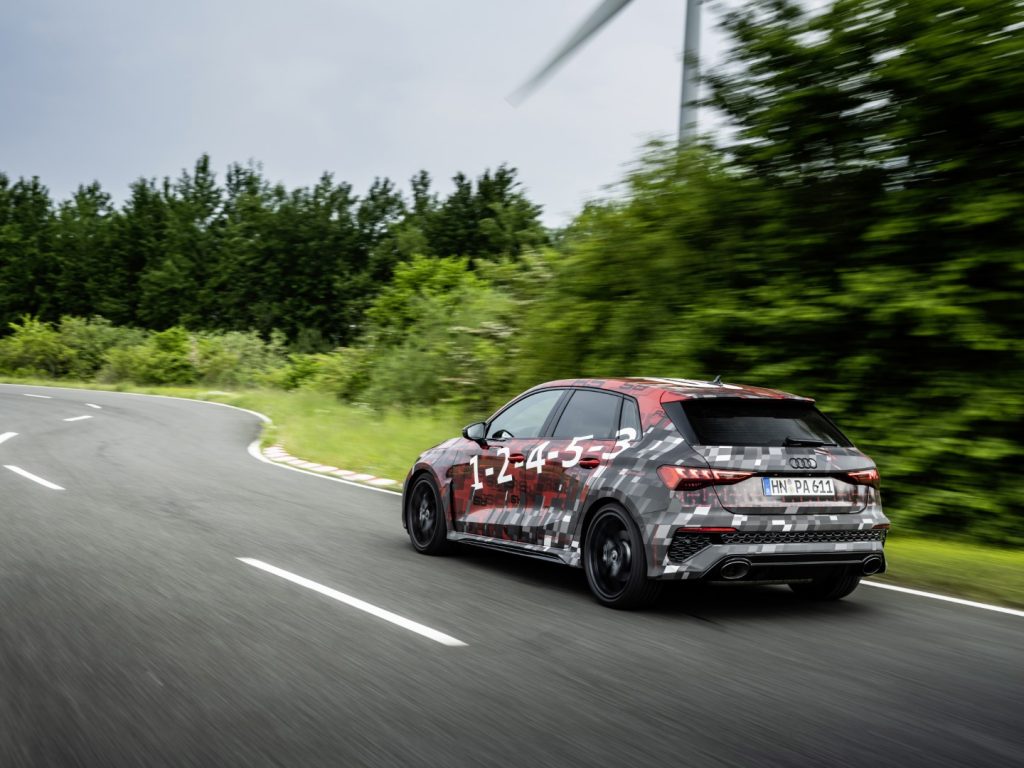
As a result, the compact sports car sprints from zero to 100 km/h in 3.8 seconds, 0.3 seconds faster than before. The Sedan and Sportback reach their top speed at 250 km/h, although 280 km/h is also available as an option.
0 to 100 in 3.8 seconds
In fact, with the RS Dynamic package and ceramic brakes, they can even reach a top speed of 290 km/h. This makes the RS 3 the best in its class in terms of acceleration and top speed.
A 7-speed dual-clutch transmission puts the power of the five-cylinder engine to the pavement – with a right-angle drive with a more robust design that takes account of the increased torque and the sportier gear ratio spread.
The intelligent interaction of all the drive components, including Launch Control, enables the RS 3 to shift gears extremely quickly, resulting in lightning-fast starts and heart-pounding acceleration.
Lower and stiffer than the A3
The setup of the springs and shock absorbers is markedly stiff, and the body is ten mm lower than on the Audi S3 and 25 mm lower than on the A3.
This lowers the vehicle’s centre of gravity further towards the road. Installed up front is a McPherson strut suspension with RS 3-specific pivot bearings, stiffened lower wishbones, subframes, and stabilizers.
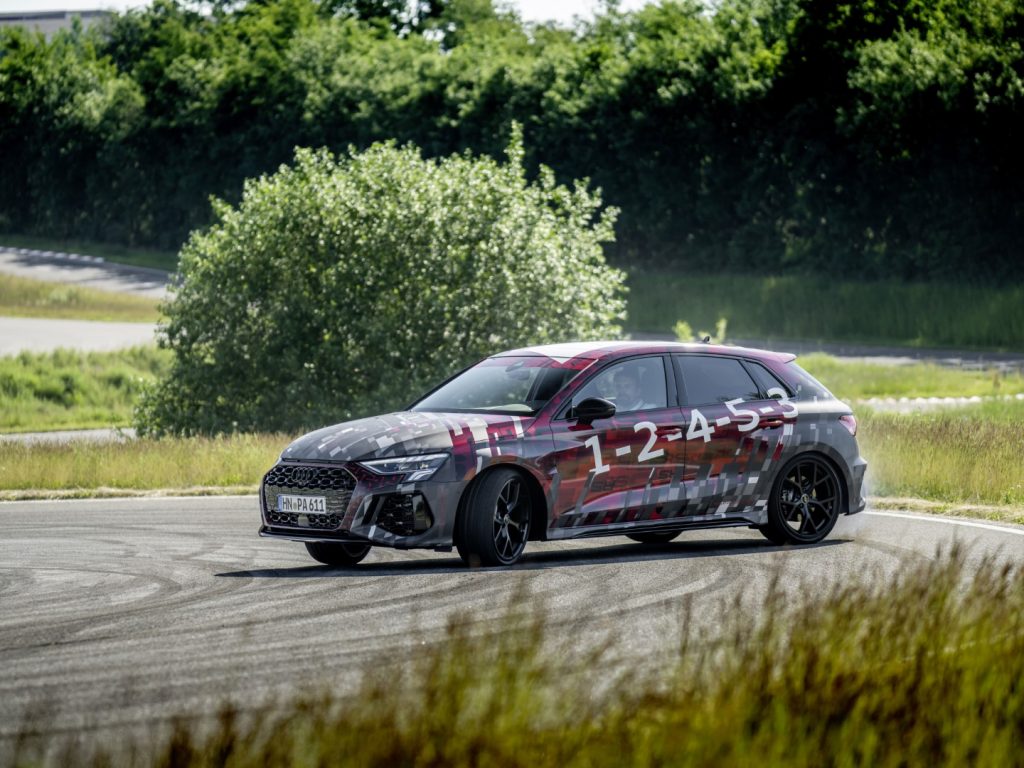
Last but not least, we have the RS-specific progressive steering varies the gear ratio depending on the steering angle – as the steering angle increases, the gear ratio becomes smaller and steering more direct.
It also assists based on speed and can be varied via Audi drive select within the three characteristic curves comfortable, balanced, and sporty. In this way, the torque splitter and the rest of the vehicle’s innovative components perfectly put the new Audi RS 3’s dynamic power to the pavement in every driving situation.


